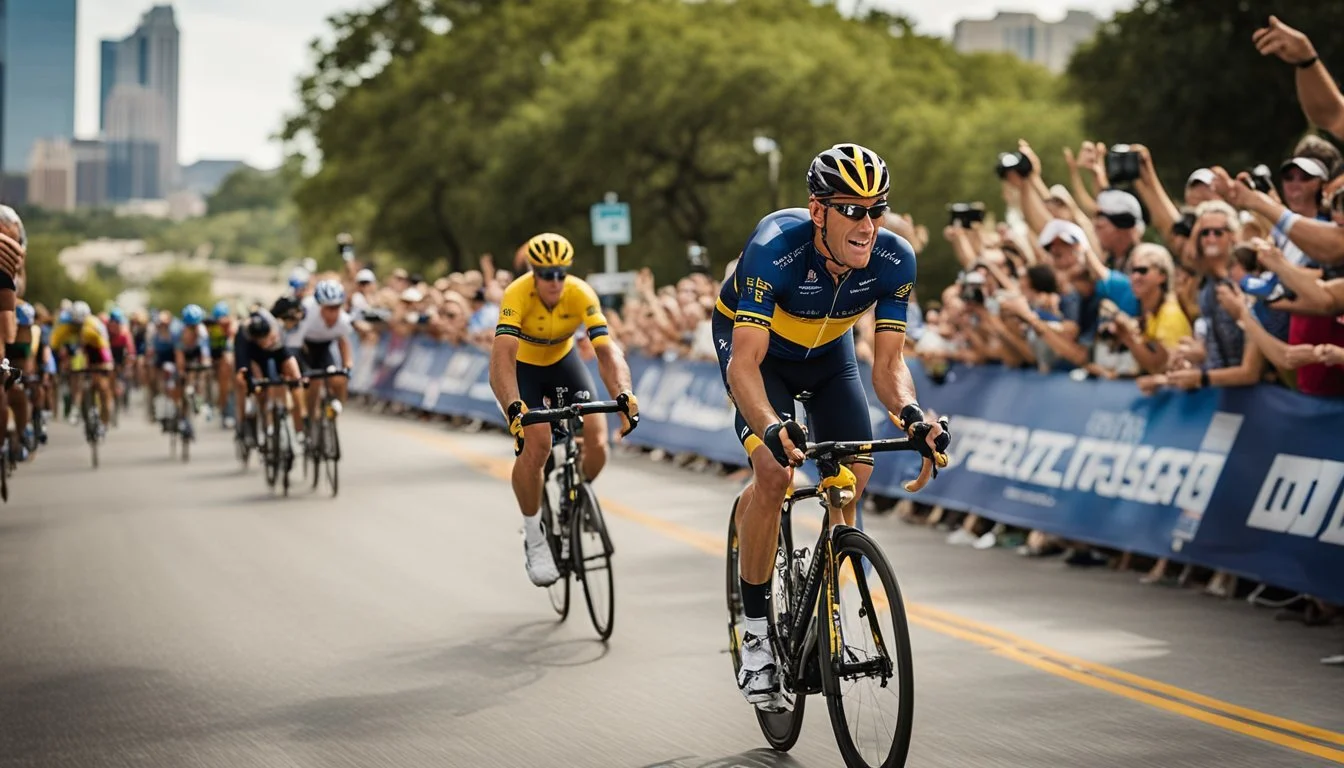Lance Armstrong's Influence on Austin's Sporting Ethics Explained
Revisiting the Confession
Lance Armstrong’s confession sent shockwaves through the world of professional cycling and beyond, leaving a significant imprint on the city of Austin. Known for his dominance in the Tour de France and his battle against cancer, Armstrong's fall from grace unveiled layers of ethical quandaries in both his career and personal life. His admission to using performance-enhancing drugs not only sullied his reputation but also raised pressing questions about integrity in sports.
Despite the scandal, Armstrong remains a notable figure in Austin, a city where his influence extends far beyond his cycling achievements. His luxurious home and business ventures in Austin speak volumes about his enduring presence. Armstrong's chic bicycle shop-cafe serves as a bustling community hub, demonstrating that his legacy in Austin's sporting culture is complex and multifaceted.
Austin, a city that prides itself on its sporting spirit and community values, finds itself at a crossroads in the wake of Armstrong’s scandal. As residents and sports enthusiasts grapple with the impact of his actions, the question of how to reconcile his contributions with his transgressions remains ever pertinent. The ongoing dialogue about Armstrong's influence offers a rich exploration of ethical considerations in the world of sports and beyond.
Lance Armstrong: The Rise to Fame
Lance Armstrong became a household name through his remarkable achievements in professional cycling and his inspiring battle against cancer. From his rise in cycling to the establishment of the Livestrong Foundation, his journey captivated millions.
Road to the Yellow Jersey
Lance Armstrong's cycling career took off in the 1990s. Initially noticed for his strong performances in triathlons, he shifted focus exclusively to cycling. By 1993, he had already won the World Road Race Championship at the age of 21.
Armstrong joined the U.S. Postal Service team, where he quickly made his mark. His major breakthrough came in 1999 when he won his first Tour de France title. This victory marked the beginning of an unparalleled streak, with Armstrong winning the prestigious race seven consecutive times from 1999 to 2005.
His dominance in the sport, often symbolized by the iconic yellow jersey, established him as one of the greatest cyclists in history.
Cancer Battle and Livestrong Foundation
In 1996, Armstrong's career faced a critical challenge when he was diagnosed with metastatic testicular cancer. The prognosis was grim, but Armstrong underwent aggressive treatment, including surgery and chemotherapy, and miraculously, he recovered.
His battle with cancer not only made him a symbol of resilience but also led to the founding of the Livestrong Foundation in 1997. Initially known as the Lance Armstrong Foundation, Livestrong focused on improving cancer patient's lives and raising awareness.
Through the foundation, Armstrong became a prominent advocate for cancer research, and the yellow Livestrong wristbands became a global movement, further cementing his influence beyond the realm of sports.
The Doping Allegations
Lance Armstrong faced numerous doping allegations that highlighted a complex web of accusations from former teammates and thorough investigations by various sports and federal authorities.
Accusations from Teammates and Competitors
Several of Lance Armstrong's former teammates, including Floyd Landis and Tyler Hamilton, came forward with testimonies implicating him in the use of illegal performance-enhancing drugs. These accusations were not limited to isolated incidents but pointed towards a systematic doping program within the US Postal Team.
Hamilton and Landis described a culture where blood boosters and other performance-enhancing substances were regularly used. Their testimonies were crucial in portraying a detailed account of the doping practices prevalent during Armstrong's career. Additionally, other competitors also voiced their suspicions, further intensifying scrutiny around Armstrong.
The significance of these testimonies extended beyond mere allegations, contributing to the comprehensive investigations that followed. They painted a picture of a highly structured and concealed doping operation, fundamentally challenging the integrity of Armstrong's athletic achievements.
Investigations by Sports and Federal Authorities
The investigations into Armstrong's doping allegations were spearheaded by the U.S. Anti-Doping Agency (USADA). In 2012, USADA published a report that detailed extensive evidence against Armstrong, including testimonies and documentation. The findings culminated in Armstrong being stripped of his seven Tour de France titles and being banned from professional cycling.
Federal authorities also initiated a criminal investigation into Armstrong's alleged perjury and fraud involving the United States Postal Service team. The Department of Justice's probe, however, was eventually closed without charges. Additionally, there was a civil case involving SCA Promotions, which contested bonuses owed to Armstrong based on his allegedly fraudulent victories.
These investigations underscored the extensive measures taken to uncover the truth behind the allegations and highlighted the broad impact on sporting ethics and public perception. The combination of sports and federal investigations revealed the depth and breadth of Armstrong's deceit, making it a landmark case in the history of athletic doping scandals.
The collaboration of various entities ensured a multifaceted approach, shedding light on the intricate details of the doping scandal and its far-reaching implications.




